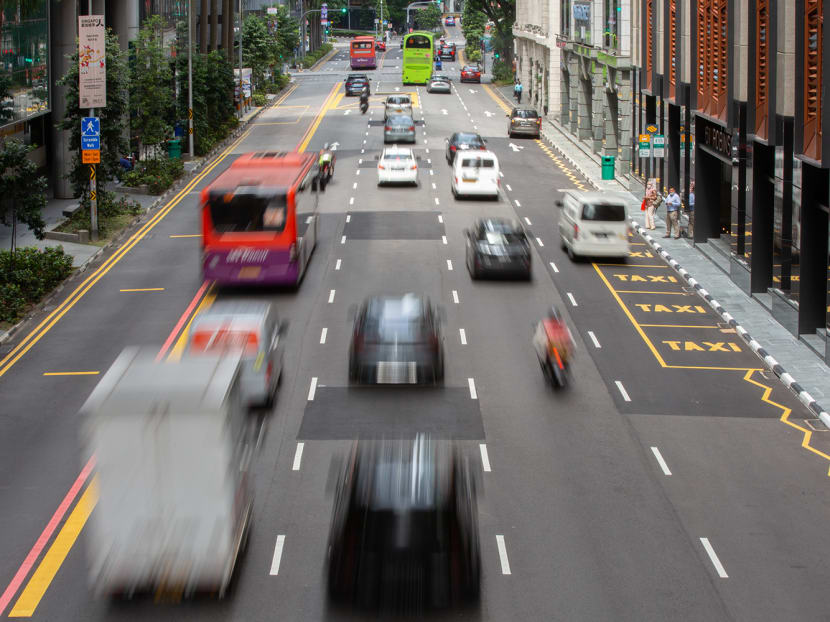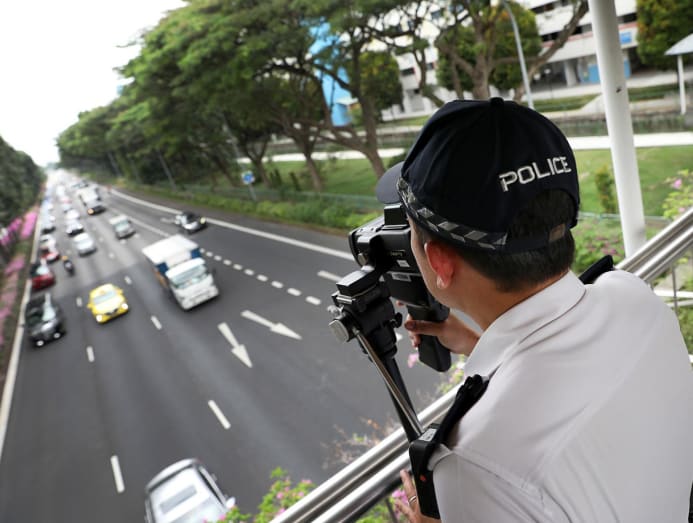Commentary: Improving Singapore’s road safety may require more drastic measures, but it’s a price worth paying

On Jan 14, 2008, a speeding van skidded and collided head-on with our family car on the expressway. Unable to get out of our vehicle, we had to wait for assistance from the Singapore Civil Defence Force.
My parents, in the front seats, both suffered broken bones and other injuries. The perpetrator emerged unscathed, and my parents could see him standing nonchalantly beside his vehicle, speaking on his mobile phone without bothering about their well-being.
As for myself in the back seat, the seat belt had kept me safe, but the impact also caused some blood vessels around my small intestines to rupture. This was only discovered during an exploratory laparotomy (like a C-section but done in the old-school vertical manner). I still have the large vertical scar.
To this day, I still encounter situations in motor vehicles where panic floods me and I have to grab onto something to calm myself.
This happens most often when I book a ride on a ride-hailing service, and private-hire drivers not only speed but also fail to maintain a safe distance from the car in front.
Whenever I ask these drivers to “drive slower / safely”, my request is usually met with either a muttering of dissatisfaction and a slowing down for a minute or two before returning to their original speed, or complete dismissal and disregard.
THE TAMPINES TRAGEDY
Upon hearing of the April 22 fatal accident in Tampines, my initial response was that of sadness, especially as it emerged that two lives had been taken away too soon.
At the same time, as in-car camera footages started to surface online, I felt a growing swell of anger about this inexplicable accident which had resulted in the deaths of two people, harm to others, and brought grief to so many in the community.
I soon realised that I was so affected by this episode not just because of my own past trauma, but because it could have happened to my children as well.
As a parent, you tell yourself that your children will be fine if you equip them with the skills and knowledge to remain safe on the roads. For example, we teach them to belt up in vehicles, and to wait for the green man at pedestrian crossings and look both ways for oncoming traffic before stepping onto the road.
The stark truth is that no matter what safety measures and precautions we take on the roads, we are at the mercy of other road users.
Unfortunately, many road users do not take this responsibility seriously.
I observe speeding occurring daily, oftentimes by heavy vehicles which have the potential to cause more serious harm. It’s also common to encounter drivers that neglect to signal, smoke while driving, or appear distracted either by conversing with a passenger or by using their mobile phones while driving.

A VISION OF SAFE SINGAPORE ROADS
What could an ideal future with safer roads in Singapore look like?
In an ideal world, we would eliminate speeding completely.
All vehicles could come equipped with Intelligent Speed Assistance technology, where traffic signs can automatically ensure vehicles comply with corresponding speed limits through an onboard communication system.
In-car cameras could also become standard in all vehicles, and footage of traffic violations synced via cloud to an artificial intelligence-powered analytics program administered by the authorities to detect traffic violations. More crucially, footage of accidents could be obtained directly and not subject to external manipulation or interference.
In addition, drivers’ road behaviours could be factored into other aspects of car ownership such as the cost of renewing one’s road tax or insurance, or even increasing the cost of future Certificates Of Entitlement (COEs) for recalcitrant drivers by factoring in a multiple as a “hazard tax”.
All these require a whole-of-government approach towards car ownership and road safety, making it more burdensome for road users to behave recklessly.
None of these proposed solutions are foolproof or easy to implement — for example, how should non-Singapore registered vehicles be dealt with? — but they strive towards transformational rather than incremental change.
WHAT CAN WE DO NOW?
New requirements for speed limiters on lorries in Singapore have been announced and will be progressively rolled out till 2027 — a good start, but insufficient.
First, all new-imported lorries should have a speed limiter installed; this should be implemented much sooner than the proposed deadline of Jan 1, 2026.
All goods vehicles should also have speed limiters, regardless of size. A heuristic could be that if the vehicle has a label with a speed limit, it should require a speed limiter. Such an initiative could have prevented the accident my parents and I were involved in, for example.
Our traffic laws should also be strengthened as an effective deterrent against speeding and other hazardous road behaviour. The Traffic Police are increasing penalties for selected offences, but could consider firmer action such as a lifetime ban from driving for cases where lives are lost.
Such an option would better factor in the principles of deterrence, retribution and public protection, and serve a stern reminder to all that possessing a driving licence is a privilege that comes with responsibilities.
Last, the enhancement of penalties will only be effective if complemented by a consistent enforcement regime, which will require adequate resources. Road users should be encouraged to support enforcement efforts by providing feedback on reckless driving.
Currently, the process for submitting traffic feedback is cumbersome and limited by requirements such as file size of submitted videos; it’s also not uncommon for members of the public to receive no response to their provided feedback.
Any solution should ideally automate or make easy the ability to enforce traffic laws for both the authorities and community.
Such systemic transformations could be costly, but the benefits of safer roads would greatly outweigh the costs incurred.
As a car owner, it may mean that I cannot afford another car when my COE expires in future; but as a father, it could also mean that my children do not have to face the risk of grievous harm — or even death.
In my view, that is a price worth paying.
ABOUT THE AUTHOR:
Nicholas Netto is a senior lecturer in social work at the Singapore University of Social Sciences.







